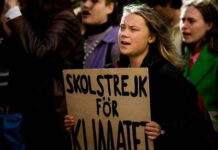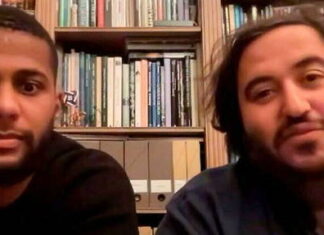From space, the Earth appeared to him as a fragile “island of life”: during his second mission in orbit, Thomas Pesquet immortalized spectacular new views of a planet whose state of degradation jumped out at him.
The French astronaut, who came down from the International Space Station (ISS) a year ago, shares his unique testimony with a selection of his best shots: 300 pictures collected in La Terre entre nos mains, a beautiful book to be published on Wednesday in the Flammarion editions, and whose royalties will be donated to Restos du Coeur.
He writes in the preamble that he “caught the photo bug” during his first mission in space (2016-2017) and tells how during his second (“Alpha”, from April to November 2021), he ceased machine-gunning the planet. This time by passing on his passion to his traveling companions on the ISS.
“Initially, I was a bit of a Sunday photographer, then I really took a liking to it,” Thomas Pesquet told Agence France-Presse. “When we arrive at the station, we have the smartphone reflex: we see something great, we immortalize it… but quickly we are confronted with limits if we want to take photos at night, for example, take precise targets with big goals, etc. It’s difficult, because everything is manual. »
On board, a dozen cameras are available to astronauts, some of which are permanently installed in the Cupola, the famous panoramic observation window of the ISS, or in the American laboratory, a porthole looking vertically towards the Earth.
He took about 245,000, during his few hours of daily leisure. “A lot are missed, but in six months there is a real progression curve.” Seas, rivers, islands, deserts, mountains, sunsets and sunrises: faced with the beauty of the Earth, the “wonder” of the astronaut was always there.
“The planet is so vast and diverse that it doesn’t feel like you’ve seen it all. Even after 400 days in orbit, there are still things that surprise me, places I haven’t seen. At 28,000 km/h, station scrolling means “we’re never over the same areas at the same times of day.”
The big news? The Northern Lights, some of which are bluish, to his great surprise: furtive moments, but which he managed to capture this time thanks to his American teammate Shane Kimbrough: like a lookout, he saw them coming from his “bedroom, it gave us time to configure our devices.”
From this “picture book in love with the Earth”, Thomas Pesquet also shares pictures “that we hate to see”, to warn of its fragility: the “sinister spectacle” of hurricanes, tornadoes and fires that shook the planet during its 200 days in orbit. Which he attended, “helpless”.
“What struck me the most were the lights. We could see the flames, the smoke very clearly, of an impressive magnitude”, giving an impression of “end of the world”. “Like in the movies”, he saw entire regions engulfed: southern Europe, British Columbia, the plain of California “bit by bit eaten by a blanket of smoke”…
“The difference in four years, I’ve seen it. My first mission was in the winter, my second in the summer, so it’s normal that there are more fires, but overall, I saw more violent phenomena,” he laments. . This palpable increase in extreme climatic phenomena, “which we know are linked to climate change, has convinced me that we have not done enough to protect our planet”, writes the astronaut.
Without science – climate experts, measurements of the effects of the disruption thanks to satellites – “we would be lost in the face of the magnitude of the stakes”, he pleads. “It’s not too late, but the longer we wait… But, unfortunately, it seems like everyone is staring at each other: every year, we say ‘Now is the time to act’. “And it’s the same the year after, we only do small actions without a strong overall impact” on the environment, he regrets.


















